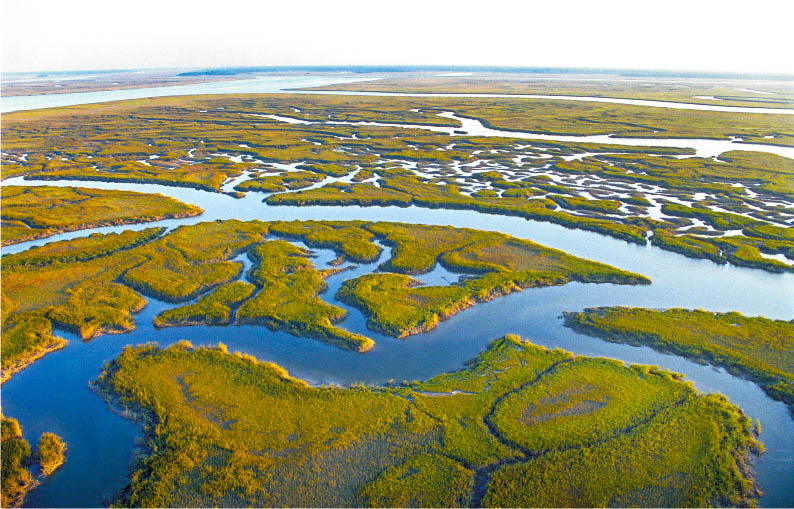Spark is inviting the land surface modeling community to participate in the Warming-Induced Greenhouse Gas Emissions Model Intercomparison Project (WIE-MIP). A limited number of grants are available to support teams that require additional resources. We anticipate supporting up to 12 modeling teams in the range of $100,000 to $150,000 per grant. Smaller grant requests are welcome, and will be prioritized. These grants are intended to support the work from the community needed to accelerate the WIE-MIP project, and land surface modeling groups who do not receive a grant are also strongly encouraged to participate in WIE-MIP.
How to Apply
- Please complete the application form available here
- Deadline to apply is November 30, 2025 (Midnight, EST)
- For questions or clarification on the grant opportunity, or to get involved in or learn more about WIE-MIP, please contact us.
- Proposals will be reviewed by an external review committee, and successful applicants will be notified by mid-December 2025.
Background and Objectives
Climate change is causing additional emissions of greenhouse gases from permafrost, wetlands, wildfires, and soils, or reduced removals from ecosystems affected by drought and heat stress. These warming-induced emissions are a major blind spot in climate science and policy and are generally overlooked in the remaining carbon budget to limit climate change and to meet the goals of the Paris Agreement.
The WIE-MIP is one part of Spark’s broader Warming-Induced Emissions Program, launched earlier this year, which is working to help better manage risks from warming-induced emissions by filling critical science and policy gaps and researching opportunities to directly mitigate some of the emissions.
The goals of WIE-MIP include fast-tracking an offline model intercomparison project to estimate warming-induced emissions to provide literature to be reviewed by the Intergovernmental Panel on Climate Change Seventh Assessment Report. A peer-reviewed protocol describing WIE-MIP will be published for discussion at the end of December 2025.
Eligibility
While funding is not necessary to participate in WIE-MIP, to apply for funding, your team must be able to meet the following criteria:
- The land-surface model must be able to use the provided gridded (ideally 0.5 degree) meteorological fields (following CMIP-like filenaming and filetype conventions) and prescribed atmospheric CO2 concentrations.
- The land-surface model must represent 3 or more of the following processes, preferably with interactions1, but individual implementation is also acceptable.
- Permafrost and emissions of CO2, CH4, and/or N2O
- Wetland CH4 emissions, with prognostic wetland area
- Wildfire and emissions of CO2, CH4, and/or N2O
- Soil emissions (for natural and agricultural soils) of CO2, CH4, and/or N2O
- Net ecosystem exchange of CO2
- Biogenic volatile organic compounds (at least monoterpene and isoprene)
- Other proposed feedbacks that are not listed here
- Ability to run five emissions scenarios (1PCTCO2 (4 sub-scenarios), 3 overshoot scenarios, 1 unmitigated scenario) for three general circulation models. With various combinations of factorial design (where necessary) to quantify process emissions. The emission scenarios are designed to quantify feedback factors, evaluate process sensitivity, and reversibility under overshoot. Thus the minimum number of scenarios is 24, with additional simulations according to factorials and interactions, and isolate emissions from individual processes.
- Ability to provide ~20 outputs following standard (i.e., CMIP) metadata and file naming conventions
- Provide access to data in a WIE-MIP managed public (most likely, cloud-based) data repository.
- Lead or join as a co-author on one or more WIE publications.
- Meet the following notional timeline:
- Jan-July, 2026: conduct simulations within 6 months of driver data release
- July, 2026: Participate in an analysis workshop (funding provided separately from the minigrants)
- July, 2026-February 2027: Contribute to or lead paper writing
- March 2027: Submission of manuscripts
- March-Dec. 2027: Other writing and synthesis activities
- Researchers are eligible to apply from non-governmental, academic and public organizations from around the world.
1 e.g., accounting for effects of wildfire on permafrost via changes in energy budgets, or other similar interactions
Allowable Expenses
Proposals can include the following allowable expenses:
- For academic faculty on an academic year salary in PI or co-PI roles, the grant can provide up to one month of summer salary support and related benefits. These salary funds are not substitutional (cannot be used to relieve a university of salary costs) and cannot be used to reduce teaching loads below the departmental norm.
- For staff/research scientists in PI or co-PI roles, the grant can provide salary support and related benefits.
- For staff and research scientists (non-PI / co-PI), as well as postdoctoral, graduate and/or undergraduate research assistants, the grant can provide salary support and related benefits.
- Up to 20% of funds may be allocated as indirect costs per the Spark indirect cost policy.
Other expense categories may be considered but must be approved in advance by Spark.
The WIE-MIP initiative is made possible through the generous support of Alta Futures, a philanthropic partner dedicated to supporting innovative climate science and solutions.
